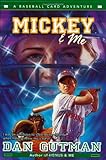Rotterdam's Picturesque Floating Park Is Built Entirely From Recycled Plastic Waste
Language
Reading Level
Listen to Article

With an estimated 100,000 marine animals being choked, suffocated, or injured by plastic every year, the danger posed by the trillions of pieces of polymer floating in our oceans is well-known. However, given that most of the microplastics measure less than 0.5mm in diameter, collecting them is a challenging task. Now, some Dutch environmentalists have devised a way to not only capture plastic waste before it reaches the open seas and disintegrates, but to also use it to create a public park and wildlife sanctuary.

Currently afloat in the Rotterdam harbor in the Netherlands, the 1500 square-foot Recycled Floating Park is the result of a five-year collaboration between the Wageningen University, WHIM Architecture, and the University of Rotterdam. The team began by developing a “plastic fisher,” a buoyant garbage collection device. Fitted with two folding arms that extend several feet into the water, it uses a net to catch wrappers, bottles, and any other debris that floats past.
The portable device, which took a year and a half to perfect, was then placed at the edge of the harbor to collect the urban trash accumulated in the New Meuse river, which rises in France and passes through Belgium and the Netherlands before draining into the North Sea. Since Rotterdam’s Nieuwe Waterweg (New Waterway) canal links the river to the North Sea, it was the ideal location to catch the “fresh” plastic waste before it disappeared into the open waters and disintegrated.

The waste collected by the “plastic fisher” and hundreds of volunteers, who painstakingly combed the river banks, was then molded into 28 hexagonal floats which were connected to create the park. Some of the blocks are open to visitors, while others house various types of plants and even trees for nesting birds. The underside of the floats provides a suitable environment for algae, mussels, and fish. Ramon Knoester, project lead for WHIM Architecture, said, “We want to take the pollution from the river and give something back in return to restore and rebuild the ecosystem.” The environmentalists say the versatile recycled blocks can also be used to build sports arenas, public walkways, and cultural hubs. Hopefully, Recycled Floating Park’s success will encourage countries worldwide to adopt similar initiatives.
Resources: Fastcoexist.com,smithsonianmag.org,newatlas.com,mnn.com
Cite Article
Learn Keywords in this Article
290 Comments
- seb793412 monthsAlthough this may seem very fun and helpful to you, this is actually obstructing the river for the cutest wildlife such as ducks and beavers. Although it is important to recycle, we are actually just further obstructing the rivers for animals.
- x_goddess_xover 3 yearsThat looks fun!
- bidrofn-ttvalmost 4 yearssooooo cooool
- doctor_who902almost 5 yearscool
- nobody knowsabout 5 yearsthat so amazing i need to go there
- edj020over 5 yearsthats sooooooo cool
- X Manover 5 yearsI want to go there!
- Danielover 5 yearsIs very interesting
- Jasmineover 5 yearsIt's such a good idea!
- chlooealmost 6 yearsNow I know that the eraser I use called the "Hi-Polymer" eraser is made from recycled plastic! I am so clueless! 😅 Glad I learned something new!!!!




